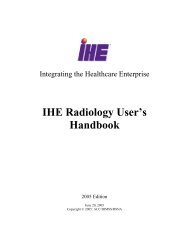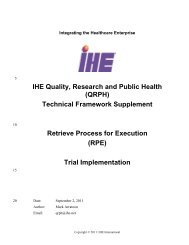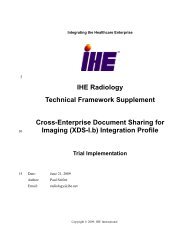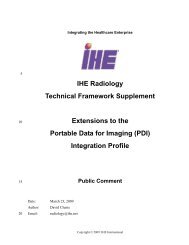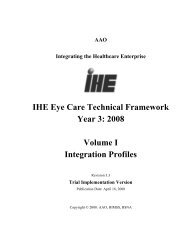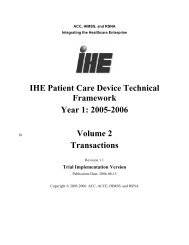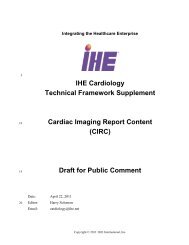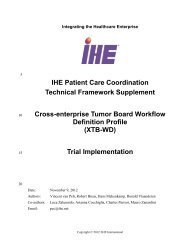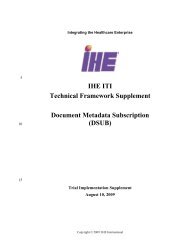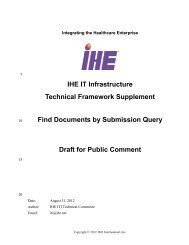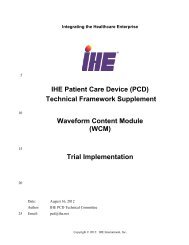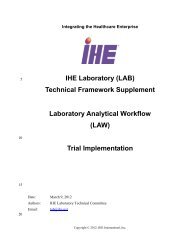ACM - IHE
ACM - IHE
ACM - IHE
Create successful ePaper yourself
Turn your PDF publications into a flip-book with our unique Google optimized e-Paper software.
<strong>IHE</strong> Patient Care Device Technical Framework Supplement – Alarm CommunicationManagement (<strong>ACM</strong>)______________________________________________________________________________Facet nameCommentsvalue4 Alarm state Indicates the state of the underlying alarm condition at the patient caredevice:inactive |active |latched (no longer active but persisted to allow caregivers to be notifiedof transient but significant events)5 Inactivation State Optional. Indicates whether visual or aural indications at the patientcare device are inactivated.6 Real-time location Optional. Real time location data concerning the patient, if available.Applicable where there are technical means to determine the currentlocation of the patient, as distinct from the administratively assignedlocation that may be present in segment PV1. The Observation Valuefor this facet is based upon a combination of digital and site agreednamed references with the digital information based upon the WorldGeodetic System (WGS) either 1984 or 2004. Additionally each digitaldata component should optionally include a metric distance basedmargin for error.7 Evidentiary data Optional. Real time waveform evidentiary data or graphical snippet.3.Z.7.5 OBX-5 Observation Value (varies) 0057315251530This field contains the value observed by the alarm reporter. Its meaning differs according to thefacet identified in OBX-4 Sub-ID (see above). The following sections give the details for eachfacet.In all cases, OBX-2-value type contains the data type for this field according to whichobservation value is formatted. It is not a required field because some systems will report onlythe abnormal flags for the observation (OBX-8). The length of the observation field is variable,depending upon OBX-3-value type. This field may repeat for multipart, single answer resultswith appropriate data types, e.g., CE, TX, and FT data types.Facet 1. Event IdentificationThe identity of alarms is represented by event codes from ISO/IEEE 11073-10101 nomenclaturefor alerts (Block E).15351540__________________________________________________________________________57Rev. 1.3– 2012-08-16Copyright © 2012: <strong>IHE</strong> International, Inc.



